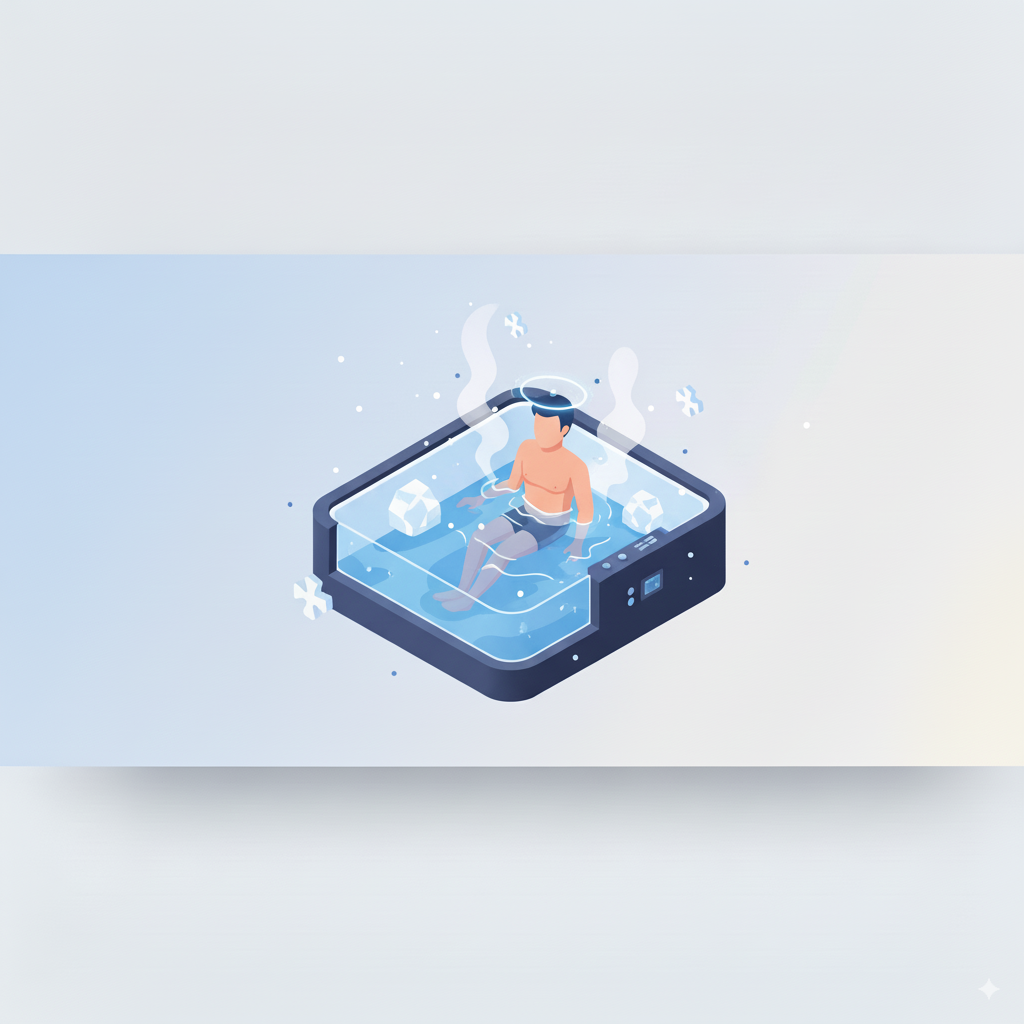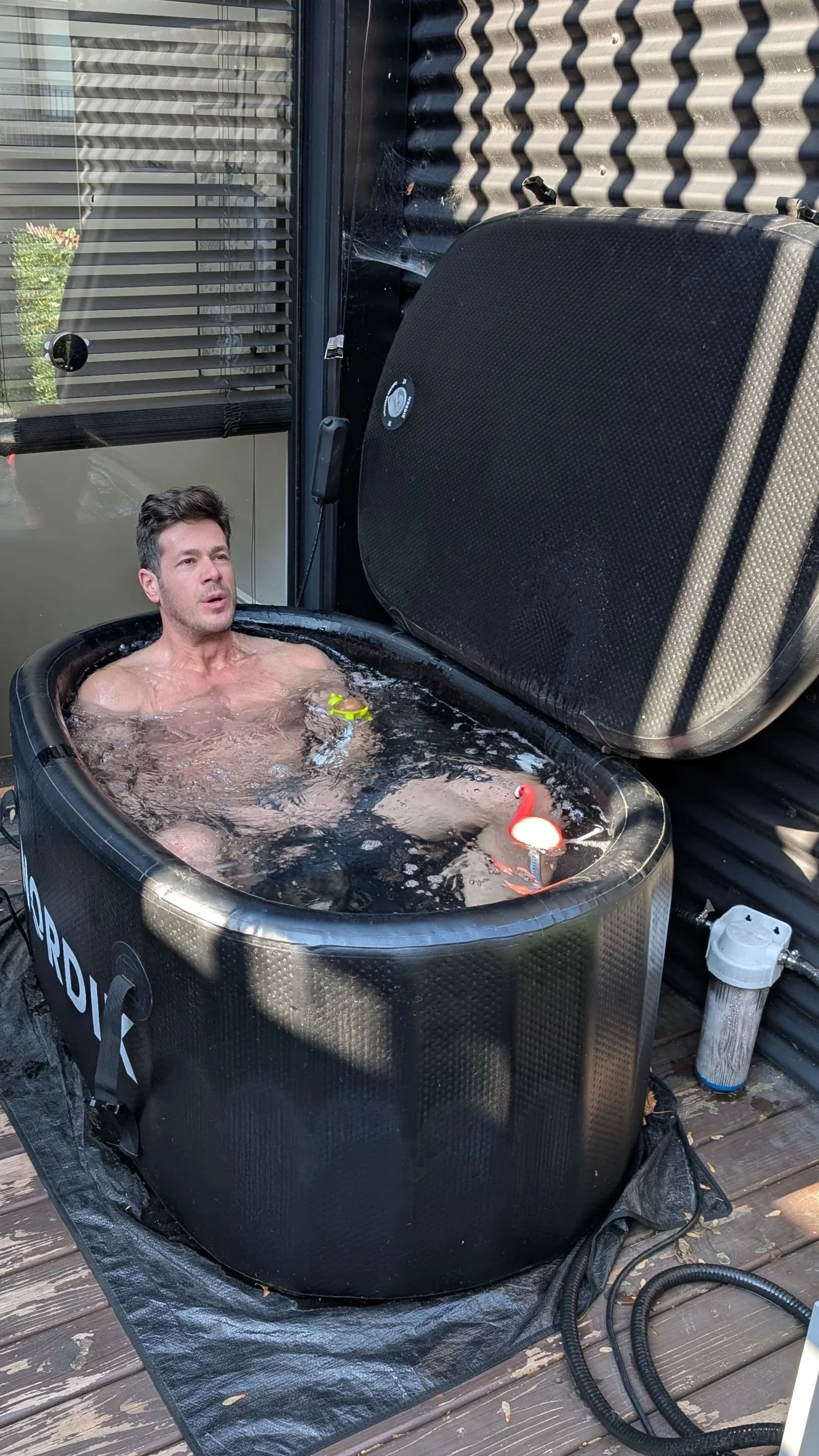Cold Therapy
I start every morning with 3 minutes in a tub of cold water (1°C to 8°C, or 34°F to 46°F). While the research suggests collecting 11 minutes per week spread across 4 to 6 sessions—think four 3-minute sessions or six 2-minute sessions per week—in water cold enough to induce a shock when you enter but not cold enough to cause physical damage is sufficient, consistency matters more to me than hitting exact targets. That's why I end up with 21 total minutes per week instead of the recommended 11.
The Science Behind the Shock
The health benefits of cold plunges have been extensively studied and documented. That initial cold shock—what researchers call the hormetic stress response—results in dramatic increases in both norepinephrine (by 530%) and dopamine (by 250%) when immersed in 14°C (57°F) water¹. Even briefer exposures, like 20 seconds in 4°C (40°F) water, can increase norepinephrine by 200-300%². Norepinephrine acts as both a neurotransmitter and hormone that enhances focus, alertness, and mood while reducing inflammation, while dopamine drives motivation, reward-seeking behavior, and feelings of satisfaction. This neurochemical cocktail effectively wakes me up and makes me alert almost instantly, leaving me with a positive state of mind for hours afterward.
The cooling of my core temperature forces my body to warm itself through shivering and other thermogenic processes, which boosts my metabolism and promotes the conversion of white fat to more metabolically active brown fat³. While I can't measure the latter directly, I do feel more capable of handling cold Canadian winter temperatures during long walks with my half-husky dog—which might not be entirely coincidental.
My Morning Routine
When I first enter the cold plunge, my body goes into shock and the first minute is dedicated to simply trying to breathe again. Once I have air flowing into my lungs, I survive the next two minutes by sitting perfectly still and controlling my breath with long, deliberate exhales. These extended exhales activate my parasympathetic nervous system⁴, creating a calming effect that helps me manage anxiety and stress throughout the day.
It's essentially breath work and stress management training induced by the harsh environment of freezing water.
Beyond the Physical Benefits
But there's one more reason why I cold plunge every morning, and it might be the most important one. It's incredibly hard to leave a warm bed and get into a tub of cold water. Often, I'll spend more time staring at the cold plunge thinking of excuses not to go in than actually in it.
But I always go in.
Every single morning, it's a reminder that my will is stronger than my inner voice of resistance—that I have the discipline to do things I don't want to do. And that's a powerful thought with which to start every day.
References
Šrámek P, et al. Human physiological responses to immersion into water of different temperatures. Eur J Appl Physiol. 2000;81(5):436-42. PMID: 10751106
Demori I, et al. Effects of winter sea bathing on psychoneuroendocrinoimmunological parameters. Explore. 2021;17:122-126.
Castellani JW, Young AJ. Human physiological responses to cold exposure: Acute responses and acclimatization to prolonged exposure. Auton Neurosci. 2016;196:63-74.
Yankouskaya A, et al. Short-term head-out whole-body cold-water immersion facilitates positive affect and increases interaction between large-scale brain networks. Biology. 2023;12(2):211.


